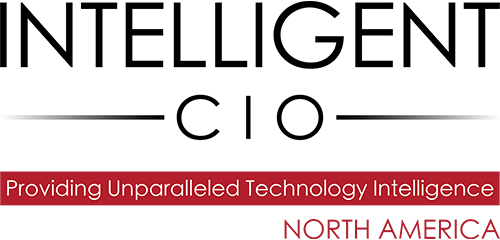We asked industry experts how important is it for CIOs to become agents for change by preparing for the future? Here are their responses.
Brian Dunagan, Vice President of Engineering, Retrospect

Change – even change for the better – can be stressful. For a CIO that wishes to be an effective agent of change, they must continuously be working in multiple dimensions. These dimensions include, but are not limited to:
Keeping their fingers on the pulse of the market to identify opportunities where technological innovation can improve their organization and help prepare it for the future; within their group, they must encourage creative thinking and new ideas; within the C-suite and organizational leadership, they must foster an environment in which change is embraced and not feared.
While most would prefer to affect change on their schedule, sometimes market conditions dictate otherwise. For instance, organizations have had no choice but to face the fact that ransomware has and will continue to change the threat landscape. This is not news to CIOs, they fully recognize that it is inevitable that at some point most will suffer a failure, disaster or cyberattack.
However, given the world’s economic and political climate, the majority have pushed their ability to detect and recover from a malicious ransomware attack to the top of their priority list. And many times, this can require change, such as amendments to procedures and deployed technologies.
The most significant change is beyond just protection. Organizations must be able to detect ransomware as early as possible to ensure their ability to remediate and recover in the event of a successful attack. A backup solution that includes anomaly detection to identify changes in an environment that warrants the attention of IT is a must.
Organizations must be able to tailor anomaly detection to their business’ specific systems and workflows, with capabilities such as customizable filtering and thresholds for each of their backup policies. And, those anomalies must be immediately reported to management, as well as aggregated for future ML/analyzing purposes.
Of course, the next step after detecting the anomaly is providing the ability to recover. This is best accomplished with an immutable backup copy of data which makes certain that the data backup cannot be altered.
To remain an effective agent of change, CIOs must ensure that their organizations realize that if they choose to remain in their comfort zone, they will eventually find it difficult to remain relevant to their customers. Instead, CIOs must help their organizations to understand that an investment in innovation is an investment in their employees, an investment in their customers and an investment in their organization’s future.
Surya Varanasi, CTO, StorCentric

An agent of change is someone who foresees an opportunity or identifies a challenge and takes action to effect change. To be successful, the person must truly listen to the people in their environment where the opportunity and/or challenges exist, to ensure that they understand all the factors involved – the pros and the cons – before strategizing, presenting their proposal, obtaining buy-in and then implementing the plan.
For CIOs this ability is critical. However, the truth is, that most CIOs have earned their leadership positions because they already know that for their organization to be successful, they must be open to change and push the boundaries of what’s thought to be possible. And of course, more often than not, the best way to achieve what appears impossible is with innovative technology.
An example of this truth are the challenges organizations face with cyber-resilience. We find ourselves in an age when cybercriminals, and the malware on which they depend, are growing increasingly intelligent and aggressive.
The only way to combat it and protect an organization’s future is to build and continuously review and update (when necessary), a strategy that includes a multi-layered defense that begins and ends with innovative technology. The layers must include defense, detection and remediation. And since it is not a question of ‘if’ but rather a question of ‘when’ will your organization be successfully hacked, this last and highly critical step or being able to ensure restoration of data and operations must be treated with the same level of urgency as the first two layers.
The ability to ensure restoration of data and operations can be achieved with an unbreakable backup solution which creates an immutable, object-locked format and then takes it a step further by storing the admin keys in another location entirely for added protection.
Other key capabilities that should be inherent in the solution include policy-driven data integrity checks that can scrub the data for faults and auto-heals without any user intervention. In addition, the unbreakable backup solution should deliver high availability (HA) with dual controllers and RAID-based protection that can provide data access even in the event of component failure.
Recovery of data will also be faster because RAID-protected disk arrays can read faster than they can write. With an unbreakable backup solution that encompasses these capabilities, organizations can ease their worry about their ability to recover — and redirect their time and attention to activities that more directly impact the organization’s bottom-line objectives and future.
CIOs that are effective agents of change know that they do not have all of the answers but are eager to ask the necessary questions to find the ideal solution. These courageous and confident CIOs have the innate ability to think outside the box and work towards making an impact that is greater than themselves.
Khalid Raza, CEO and Founder of Graphiant

Any CIO looking at the future realizes major changes are imminent.
The reality is that data is outpacing connectivity. If we took all the data in the world and transferred it across the street, using all the bandwidth in the world, it would take 36 years to complete that transfer. Worse, by 2025, that same transfer (all the data in 2025 using all the bandwidth in 2025) would take 70 years.
What this means for CIOs is that the days of centralizing data are over. CIOs must become agents of change and start storing data where it is generated and where it is used. This means more edge networks and a move away from client-server networking towards peer-to-peer networking.
Once you accept these trends, CIOs realize they must rethink how they build networks. And that means everything will change.
.
Tyler Swinehart, Global IT and Security Manager at IRONSCALES

Change in technology is the constant state. There is no longer an option for ‘just keeping the lights on’. If you are not planning and navigating change for the future, then you are falling behind. It’s critical for a CIO to be aware of the current state, but to also be encompassing change into the daily operation to set the company’s vision on the fast-approaching future. Look through the turn, or you’ll only know it once it’s passed.


